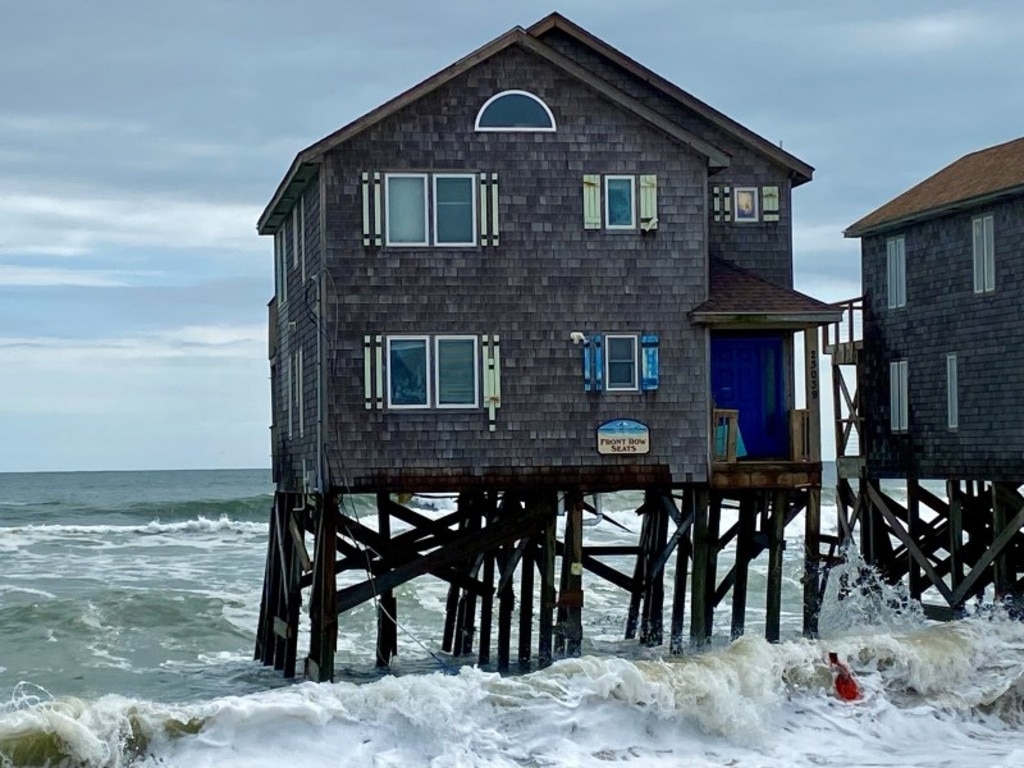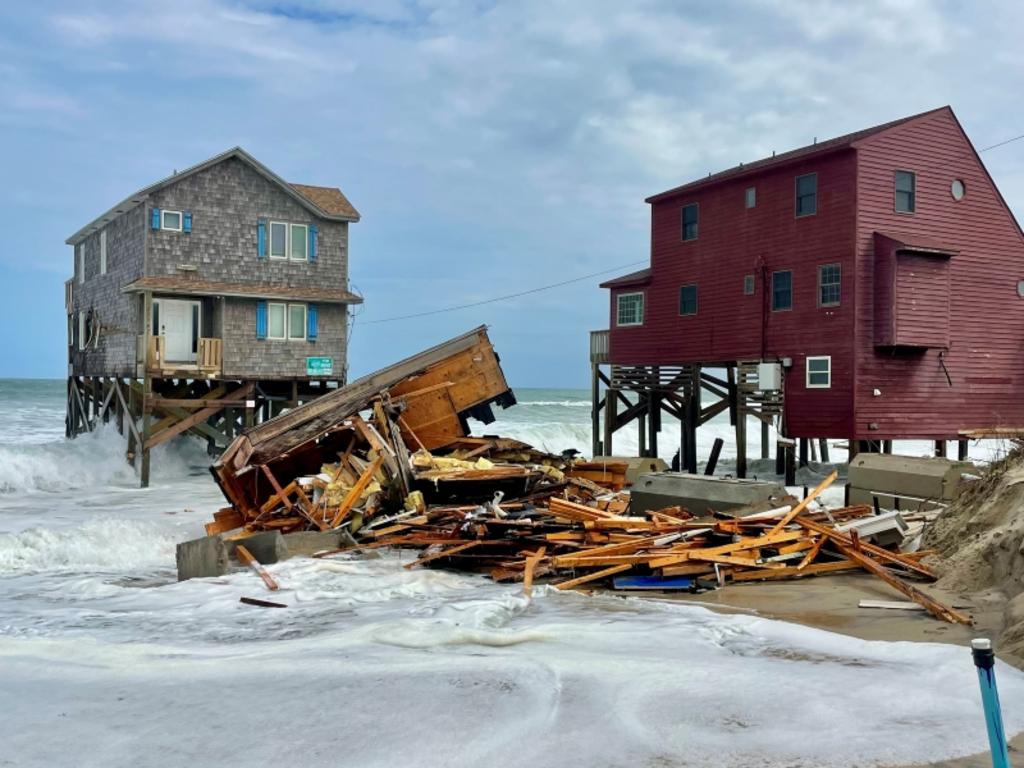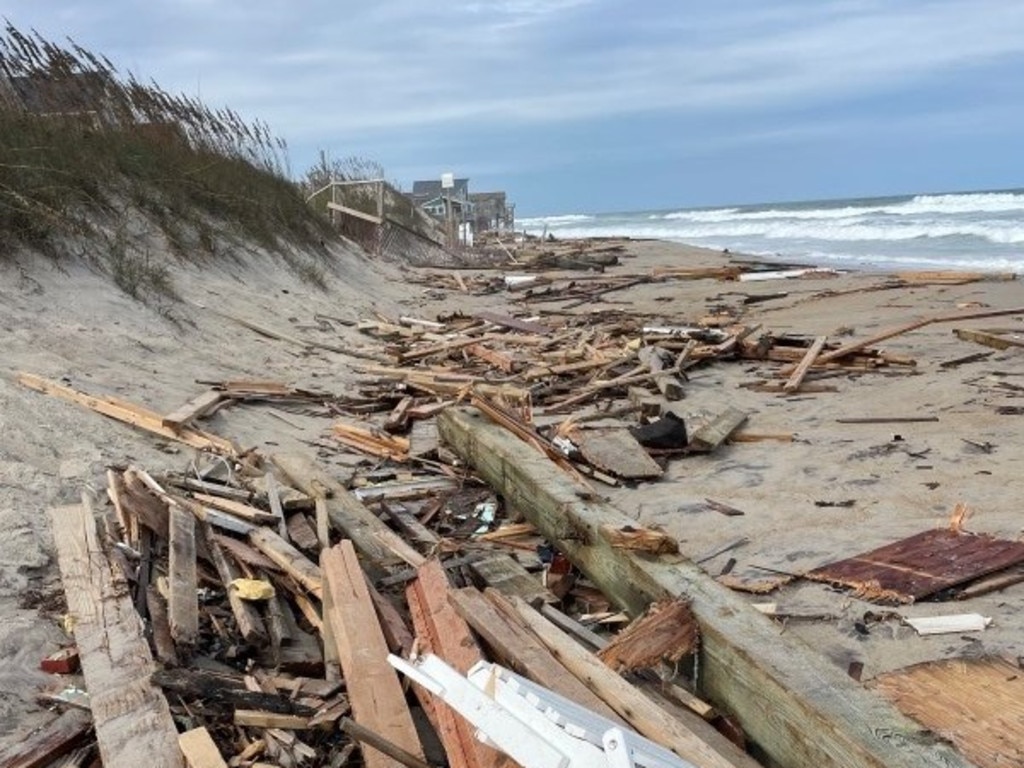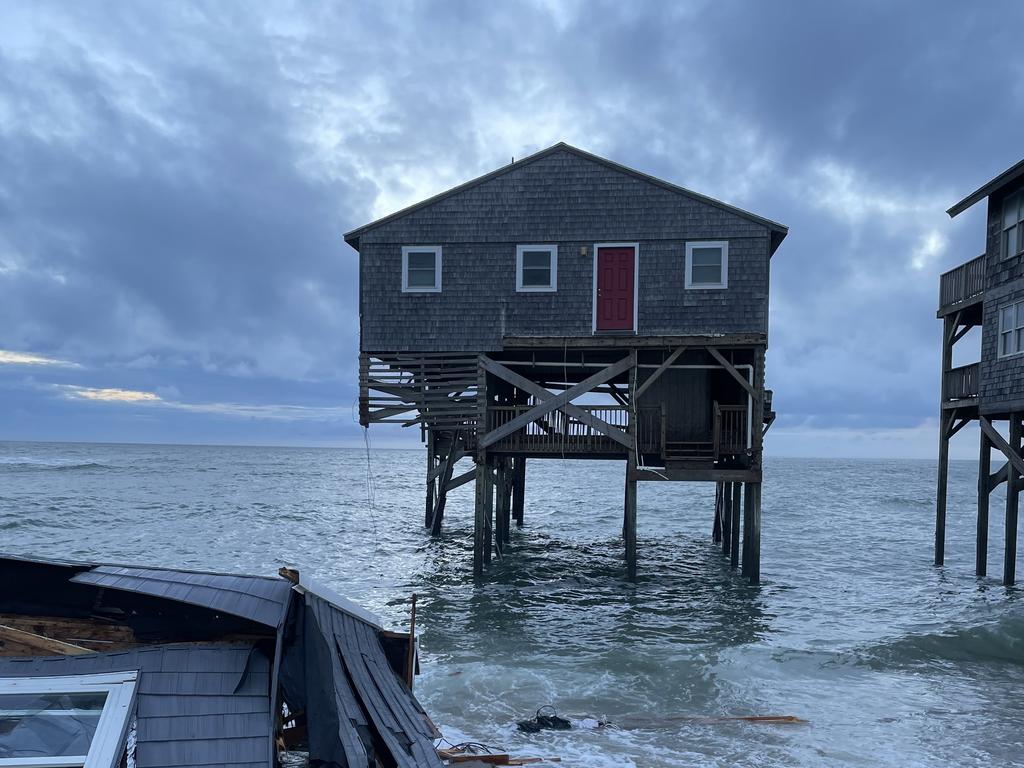Insane moment house swallowed by ocean
Dramatic footage has captured the moment a beachfront home was swallowed by the ocean and swept away by the tide. It’s the third house to collapse in four days.
Dramatic footage has captured the moment a towering beachfront home was swallowed by the ocean and swept away by the tide.
It was the third house to collapse along the picturesque stretch of coastline in North Carolina in just four days and the tenth in the last four years.
The small vacation village of Rodanthe, which has a population of just 200, is battling the effects of rapid coastal erosion and climate change.
The most recent home to collapse, dubbed “Front Row Seats” by locals, buckled in the surf on Tuesday afternoon and triggered an urgent response from rangers.
“There is a large amount of hazardous floating debris being transported floating debris being transported by the waves that will cause injuries,” officials said.


Swimmers and surfers were told to stay out of the water and visitors urged to “wear hard-soled shoes when walking on the beach to avoid injuries from nail-ridden wooden debris”.
The owner of the home, which was unoccupied, had already hired a contractor to move it from the shore but elevated tides made it impossible for them to save it in time.
“The biggest concern is just cleaning everything up, Paul Troy told Raleigh ABC station WTVD.
“We get a lot of slack, all of these homeowners do that they don’t care. These are money machines and that’s not the case. We lose sleep over littering the beach.”
Mr Paul spoke about the devastating impacts erosion had on the home, which he bought in 2008.
“At the beginning of the summer, we lost 13 vertical feet. We lost the staircase. We lost part of the septic system,” he said.
“We chose not to rent it out the rest of the summer because we were going to wait and see what the beach did, see if it came back.”


David Hallac, superintendent of the Cape Hatteras National Seashore, said the huge wooden support pilings – often up to five metres deep – did little to protect the homes.
“It’s like a toothpick in wet sand or even a beach umbrella,” Hallac told AP.
“The deeper you put it, the more likely it is to stand up straight and resist leaning over.
“But if you only put it down a few inches, it doesn’t take much wind for that umbrella to start leaning. And it starts to tip over.”
Another of the homes that collapsed last weekend once had almost 100 metres of beach between its back doors and the ocean.
“There was a football field of beach behind these houses” when they bought their house more than a decade ago, the homeowner told WRAL.
“So many people say hateful things [and] ask why we built our house in the middle of the ocean,” said another homeowner.
“It was not like this when we bought it.”

Theresa Matyiko, who owns a firm that’s helping to relocate beachfront houses in Rodanthe, said there had been a “rapid change, just in the past year”.
“Homeowners are caught in this quandary: ‘What do I do?’.” She told the Washington Post earlier this year.
“All we’re trying to do is help people save their homes. We don’t want to see them go into the water.”
Oceanographer Reide Corbett told the publication it was a “national and global problem”.
“We are going to see more and more of these challenges going forward. The process of shoreline erosion is not going to go away,” he said.
The effects of coastal erosion are being felt closer to home too.
In 2016, a row of waterfront mansions in Collaroy, Sydney, were pummelled during a massive storm.
Wealthy residents banded together and fronted the majority of a $25 million fee to build a 1.3 kilometre seawall to protect their homes from being swept away.




